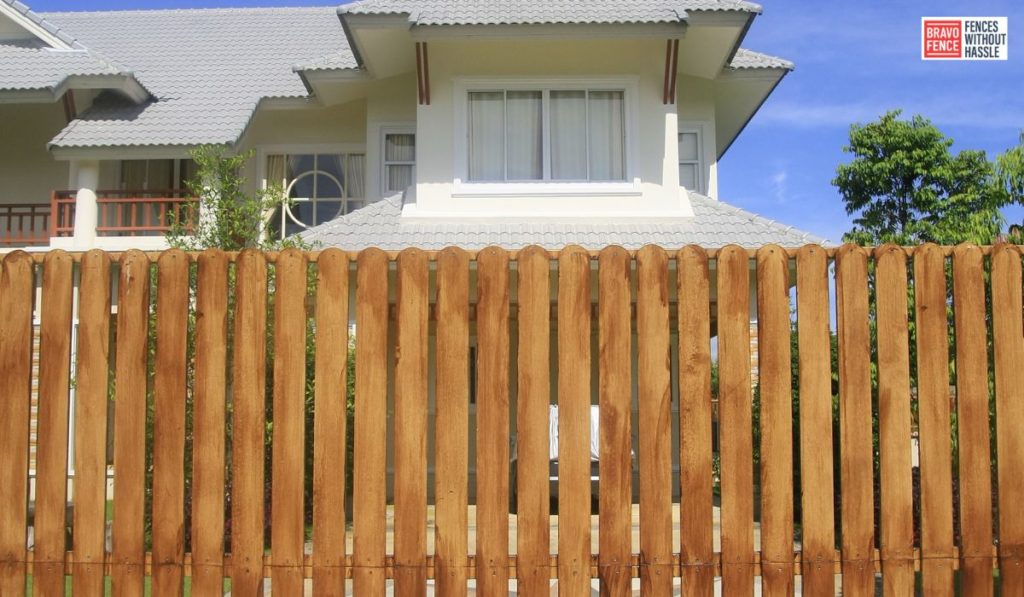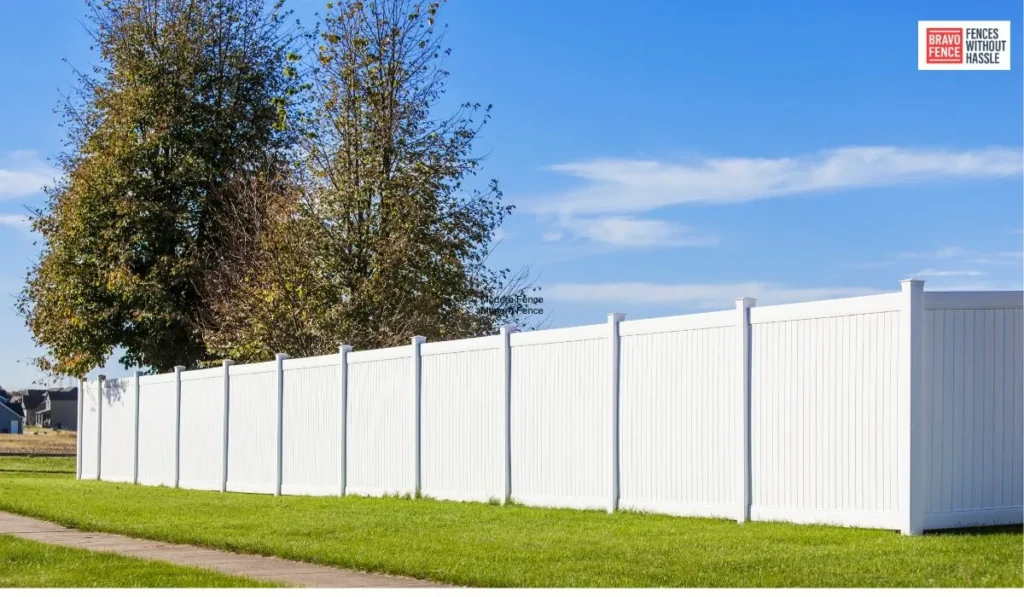Sealing a wood fence is an essential step in ensuring its longevity and protecting it from the harsh elements. With a few simple steps, you can effectively seal your wood fence and enhance its durability. Let’s delve into the process of sealing a wood fence and explore some useful tips along the way.
Prepping Up the Fence
Before you begin the sealing process, it’s crucial to prepare your wood fence properly. Start by cleaning the fence thoroughly to remove any dirt, debris, or mildew that may have accumulated over time. You can use a mild detergent and water solution along with a scrub brush to scrub away any stubborn stains. Rinse the fence with water and allow it to dry completely.
How to Choose the Right Sealant for Your Fence?
Selecting the right sealant for your wood fence is vital to ensure effective protection and long-lasting results. Consider factors such as the type of wood used for your fence, the desired finish, and the level of protection required. There are various sealant options available, including clear sealants that preserve the natural look of the wood and tinted sealants that provide a desired color tone. Consult with a local hardware store or a professional to determine the best sealant for your specific needs.
Step-By-Step Guide to Seal a Wood Fence

Now that you have prepped your fence and chosen the appropriate sealant, let’s walk through the step-by-step process of sealing a wood fence:
- Start by ensuring the weather conditions are suitable for sealing. Avoid sealing on extremely hot or humid days, as it may affect the drying process.
- Protect yourself by wearing appropriate safety gear, including gloves, goggles, and a mask, to avoid direct contact with the sealant.
- Stir the sealant thoroughly to ensure a consistent mixture.
- Use a brush, roller, or sprayer to apply the sealant evenly across the wood fence. Begin from the top and work your way down, making sure to cover each section thoroughly.
- Pay extra attention to the end grains and joints, as these areas are more prone to moisture absorption. Apply an additional coat if necessary.
- Allow the first coat to dry completely as per the manufacturer’s instructions. This typically takes several hours.
- Once the first coat is dry, apply a second coat for added protection and longevity. Follow the same application process as before.
- After the second coat, allow the sealant to cure completely. This may take a few days, depending on the product used. Avoid any contact with water during this period.
- Once the sealant has cured, inspect the fence for any missed spots or uneven application. Touch up these areas as needed.
Tips to Stain a Fence
If you wish to add color to your wood fence, staining can be done before or after the sealing process. Here are some tips to keep in mind:
- Choose a stain that is compatible with the sealant you plan to use.
- Test the stain on a small, inconspicuous area of the fence to ensure you achieve the desired color.
- Apply the stain evenly with a brush or sprayer, following the manufacturer’s instructions.
- Allow the stain to dry completely before proceeding with the sealing process.
Protect Your New Wood Fence with a Sealer!

Sealing your new wood fence is a wise investment that will help protect it from the elements and extend its lifespan. By following the steps outlined above and selecting the appropriate sealant, you can ensure that your wood fence remains sturdy, weather-resistant, and visually appealing for years to come. Don’t overlook the importance of regular maintenance and resealing as needed to maintain the fence’s protection and beauty.
FAQs
Do I need to seal my wood fence?
Sealing your wood fence is highly recommended to protect it from the damaging effects of moisture, sunlight, and other environmental factors. It helps prevent rot, warping, cracking, and discoloration, ensuring the longevity of your fence.
What is the best way to seal a wooden fence?
The best way to seal a wooden fence is to thoroughly clean and prepare the surface, choose a high-quality wood sealant, and apply it evenly using a brush, roller, or sprayer. Following the manufacturer’s instructions and allowing sufficient drying time is crucial for optimal results.
How long should you wait to seal a wood fence?
It is generally recommended to wait at least 4-8 weeks after installing a new wood fence before sealing it. This waiting period allows the wood to acclimate and dry out properly, ensuring better absorption and adhesion of the sealant.
Is it better to stain or seal a fence?
Both staining and sealing have their advantages. Staining adds color to the wood and enhances its natural beauty, while sealing provides a protective barrier against moisture and UV rays. For optimal results, it is often recommended to stain the fence first and then apply a sealant on top for added protection.
Can you leave a wood fence unstained?
While it is possible to leave a wood fence unstained, it is not recommended. Unstained wood is more susceptible to weathering, rotting, and discoloration. Staining not only enhances the appearance but also provides essential protection to prolong the life of the fence.
How long does Thompson’s WaterSeal last on a fence?
Thompson’s WaterSeal, a popular wood sealant, typically lasts up to two years on horizontal surfaces such as fences. However, the longevity can vary depending on factors like weather conditions, sun exposure, and maintenance practices. Regularly inspect the fence and reapply the sealant as needed.
Do I need to wash the fence before sealing?
Yes, it is important to wash the fence before sealing. Washing removes dirt, debris, and any existing mold or mildew, ensuring a clean and smooth surface for the sealant to adhere to. Use a pressure washer or a scrub brush with a mild detergent to thoroughly clean the fence. Rinse it off with water and allow it to dry completely before applying the sealant.
Does sealing a fence make it last longer?
Yes, sealing a fence significantly extends its lifespan. The sealant creates a protective barrier that shields the wood from moisture, UV rays, and other damaging elements. By preventing water absorption and reducing the effects of sun exposure, sealing helps to prevent rotting, warping, and premature aging of the wood, ultimately increasing the longevity of the fence.
What can I put on my wood fence to protect it?
To protect your wood fence, you can apply a high-quality wood sealant or a waterproofing product specifically designed for outdoor use. These products penetrate the wood, forming a protective layer that helps repel water, resist UV damage, and prevent the growth of mold and mildew. Regularly applying a sealant or waterproofing product will help maintain the fence’s appearance and structural integrity.
Should you seal both sides of a wood fence?
It is generally recommended to seal both sides of a wood fence for optimal protection. Sealing both sides ensures that the entire wood surface is shielded from moisture and other environmental factors. This helps maintain the stability and appearance of the fence over time, as both sides are equally susceptible to damage caused by weathering and aging.
How long will untreated wood last on a fence?
Untreated wood used for a fence is more vulnerable to rot, decay, and insect infestation. Without any protective treatment, the lifespan of untreated wood can vary depending on factors such as the types of wood for fence, local climate, and exposure to moisture. On average, untreated wood fences can last anywhere from 5 to 15 years before showing signs of significant deterioration.
What happens if you don’t stain a wood fence?
If you don’t stain a wood fence, it is more prone to damage and deterioration. Unstained wood is exposed to the elements, including moisture, sunlight, and temperature fluctuations, which can cause the wood to warp, crack, and decay over time. Staining not only enhances the fence’s appearance but also provides essential protection against these issues, extending its lifespan.
Can you seal a fence without staining?
Yes, you can seal a fence without staining it. While staining adds color and enhances the aesthetic appeal of the wood, sealing alone provides vital protection against moisture, UV rays, and other damaging elements. If you prefer the natural look of the wood or if it already has the desired color, applying a sealant without staining is a suitable option to protect the fence.
What is the best season to stain a fence?
The best season to stain a fence is typically during mild and dry weather conditions. Spring and fall are often considered ideal as the temperature and humidity levels are moderate. Avoid staining the fence in extreme heat or cold, as it can affect the staining process and the quality of the finish. Additionally, check the manufacturer’s recommendations for the specific stain product you are using.
Should I seal my pressure-treated fence?
Sealing a pressure-treated fence is highly recommended to enhance its durability and protect it from the elements. Pressure-treated wood is treated with chemicals to resist rot and insect damage, but it still requires additional protection to maintain its longevity. Applying a sealant helps to prevent moisture absorption, minimize warping and splitting, and prolong the overall lifespan of the fence.
What happens if you don’t stain a pressure-treated wood fence?
If you don’t stain a pressure-treated wood fence, it will eventually experience weathering and discoloration. Pressure-treated wood contains chemicals that protect against rot and insect damage, but they do not provide long-term protection against UV rays and moisture. Without staining, the fence’s appearance may become gray or weathered over time. Staining not only enhances the fence’s aesthetics but also adds an extra layer of protection, extending its lifespan and maintaining its original color.
Should I use Thompson’s WaterSeal on pressure-treated wood?
Thompson’s WaterSeal is a popular choice for sealing and protecting wood surfaces, including pressure-treated wood. It helps to repel water, prevent warping and splitting, and guard against UV damage. Using Thompson’s WaterSeal on a pressure-treated wood fence is a suitable option to enhance its durability and maintain its appearance. Follow the manufacturer’s instructions for proper application and reapplication based on the specific product.
How many coats of stain does a fence need?
The number of coats of stain needed for a fence depends on various factors, including the type of wood, desired color intensity, and the condition of the wood surface. In general, applying two coats of stain is recommended for optimal coverage and protection. The first coat penetrates the wood, while the second coat ensures even color and enhanced durability. However, always refer to the staining product’s instructions for the recommended number of coats and drying times.
Conclusion
Sealing your wood fence is essential for its protection and longevity. By following the steps mentioned in this article and using the right sealant, you can safeguard your fence against moisture, UV rays, and other environmental factors. Regular maintenance and reapplication of the sealant will help maintain its appearance and structural integrity, ensuring years of beauty and functionality for your wood fence.





